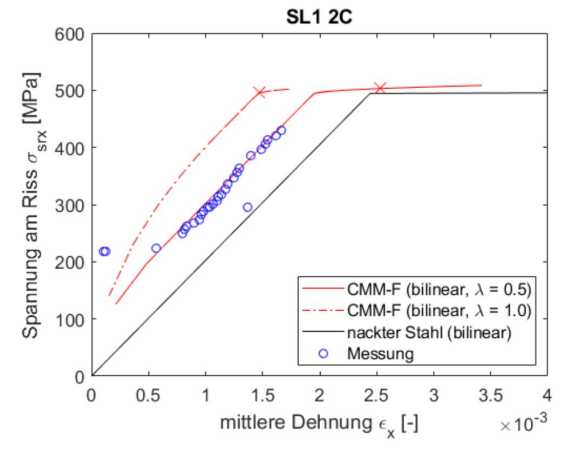Stress transfer across cracks in slightly reinforced concrete panels subjected to shear
Influence of the Stress-Strain-Relationship of Reinforcing Steel
(original title: Spannungsübertragung in Rissen in schwach-bewehrten Betonscheiben unter Schubbeanspruchung)
Author: Janique Kälin
Language: German
Abstract
The influence of different constitutive laws of reinforcing steel on the Cracked Membrane Model with fixed interlocked cracks (CMM-F) by Prof. Walter Kaufmann is analysed in the scope of this Master's Thesis. To this end, a trilinear constitutive law with a yielding plateau is added to the original numerical implementation of the CMM-F, which includes a bilinear constitutive law for reinforcing steel. A parameter study of the new numerical implementation shows a very small influence of the yielding plateau on the overall predictions of the model. In comparison, the influence of the chosen aggregate interlock model is much more pronounced.
In the practical part of the thesis, two shell elements with dimensions of 2.0 x 2.0 x 0.35 m and different vertical reinforcement ratios (ρz = 0.14 and 0.22 %, respectively) are casted and tested in the Large Universal Shell Element Tester under pure shear loading. Using fibre optic strain measurements and digital image correlation, it is possible to track the deformations of the reinforcement and the concrete surface. The strain measurements of the fibres are often disturbed by noise, which is discussed as well as the comparison of the steel stresses determined from the experiments and the modelled steel stresses. The measured data shows a good agreement with the model. However, the model overestimates the steel stresses at the crack. A possible explanation is the difference between the modelled crack pattern and the real crack pattern. The modelled crack pattern overestimates the crack spacing and therefore, the tension stiffening of the concrete and consequently the steel stresses at the crack are as well overestimated.


